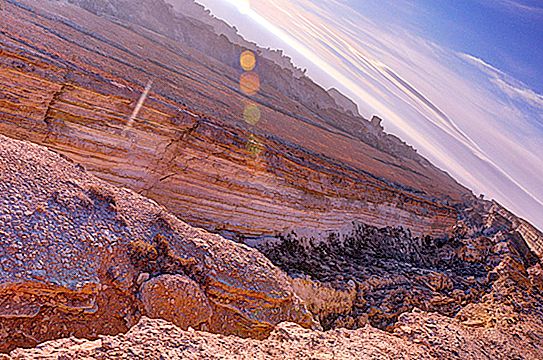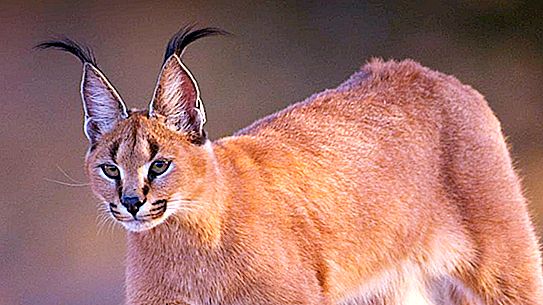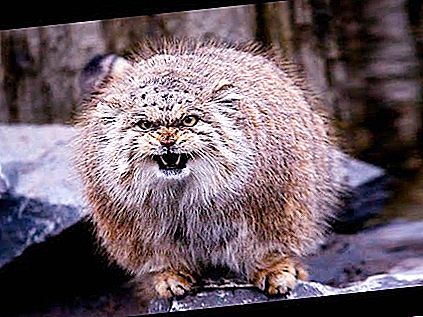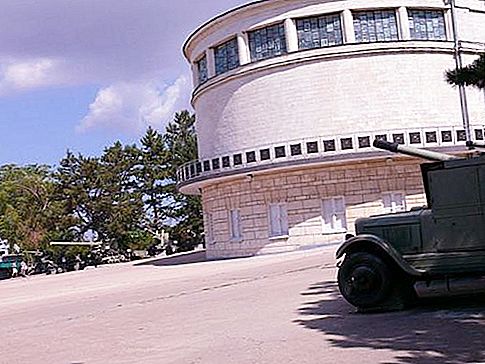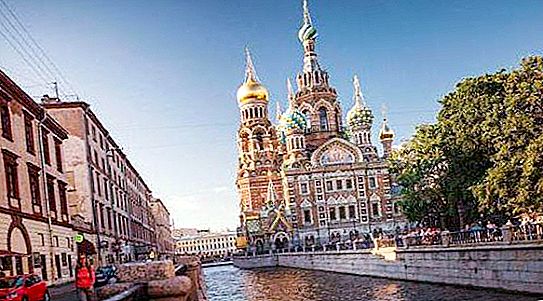Ustyurt Reserve in Kazakhstan is a unique place. The local landscapes are called fantastic, extraterrestrial, unreal … However, the value of the reserve lies not only in the landscapes, but also in its diverse fauna. There are many rare and endangered species of animals. In this article you will find the most detailed information about the geography, climate, flora and fauna of the Ustyurt reserve. In addition, we will tell you about its most interesting inhabitants.
Ustyurt Reserve: photos and general information
For the first time, the idea of protecting unique landscapes on the Ustyurt plateau arose in the 60s of the last century. It was during this period that the Soviet government began to actively develop the deserted and unsuitable for living spaces of Central Asia.
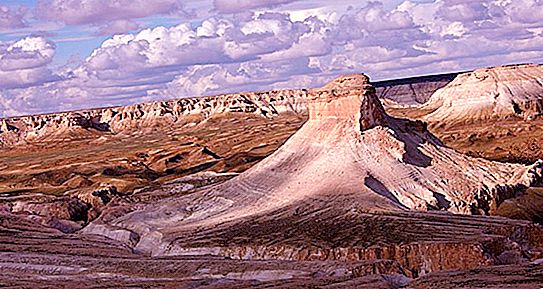
Ustyurt State Nature Reserve was officially created in July 1984 on an area of 223.3 thousand hectares. It is located on a picturesque watershed between the Caspian in the west and the rapidly drying Aral Sea in the east (map below). From the point of view of natural-geographical zoning, this territory belongs to the Iran-Turan desert subregion, and administratively is located within the Mangistau (formerly Mangyshlak) region of Kazakhstan.
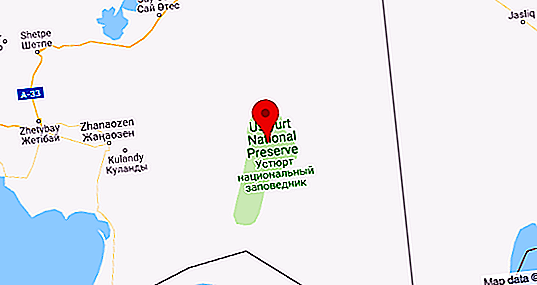
Ustyurt Reserve is a contender for UNESCO World Heritage List. To date, this prestigious list includes only two natural sites from Kazakhstan - the Western Tien Shan and Saryarka.
Ustyurt Plateau
Before you begin a detailed story about the objects of protection of the Ustyurt Reserve, you should familiarize yourself with the climatic and geomorphological conditions in which it is located. It will be about the Ustyurt plateau - one of the least studied places on planet Earth.
The plateau covers an area of 200 thousand square kilometers within two neighboring states - Kazakhstan and Uzbekistan. From the west it is limited by Mangyshlak, and from the east by the Amu Darya river delta. In fact, Ustyurt is a vast clay-crushed desert, which is sporadically covered with solonchak and wormwood vegetation. Local landscapes are called cosmic, extraterrestrial and at the same time unforgettable. The plateau looks especially beautiful in late spring and autumn.

One of the local names for the Ustyurt plateau is Barsa-Kelmes. It can be translated into Russian like this: “If you go, you won’t return!” And this is not just a banal threat. In summer, the air temperature here sometimes exceeds +50 ° C, and in winter, cold piercing winds blow. And around - not a single reservoir, not a single constant stream! But, in spite of everything, many adventurers and courageous tourists strive to penetrate into the very heart of Ustyurt, called by the people of Shaitan-Kala ("Devil's Castle").
History of creation
Ustyurt State Nature Reserve is located in the southwestern part of the Ustyurt plateau. But his administration is located two hundred kilometers west - in the city of Aktau.
Active development of Ustyurt began in the mid-1960s, when significant reserves of gas, oil, and uranium ore were discovered on the Mangyshlak Peninsula. At this time, roads are being actively built here, oil and gas pipelines are laid, new cities and towns are being built. In a relatively short period, the population of the Mangyshlak region almost doubled.
But this process also had a downside. The so-called conquest of Mangyshlak was accompanied by uncontrolled poaching: saigas, gazelles, cheetahs and other large animals were shot by dozens or even hundreds. By the beginning of the 80s, the saiga population declined tenfold, and the Asian cheetah was completely exterminated in this region. Many species of birds were endangered.
Scientists and local historians were worried and sounded the alarm. After lengthy bureaucratic procedures and approvals, the Ustyurt State Nature Reserve was formed. It happened in 1984. However, far from the entire territory originally proposed by scientists and zoologists was included under protection.
Geology and Terrain
Ustyurt Reserve is located at heights of 50 to 300 meters above sea level. The highest point is located near the Kugusem spring (340 meters), and the lowest is north of Kenderlisor (-52 meters).
The territory of the reserve was finally formed about 15-20 thousand years ago, after several offensives and retreats of the Caspian. Permian deposits are found everywhere, represented in the form of folds of black and grayish-brown rocks with fragments of petrified remains of ancient plants. Traces of the Jurassic period are thin layers (10-30 centimeters) of fossil coal, which can be found on the eastern slopes of the Karamay ridge.
The most interesting objects in the Ustyurt reserve are chinks. These are steep cliffs, ledges, reaching 150-200 meters in height. They are composed of rocks of the Cretaceous period - chalk and limestone. They contain perfectly preserved remains of ancient marine animals - ammonites, shells of mollusks, shells of sea urchins, shark teeth, ridges of bone fish, etc. You can see how Ustyurt’s chinks look in the photo below.
Climate features
Ustyurt Nature Reserve lies completely in the zone of sharply continental climate. Well-deservedly, this place was once called the "cruel land" by the famous scientist Eduard Eversman.
The climatic conditions of Ustyurt are extremely harsh. Summer in the reserve is very dry and hot. The column of the thermometer in July sometimes rises to + 50 … + 55 ° C. But in the winter months, it can drop to 30-40 degrees with a minus sign. Thus, the annual temperature amplitudes in this region reach colossal values. Ustyurt winters are often accompanied by strong snowstorms and piercing winds. Although in some years the snow may not fall at all.
Precipitation for the year falls a little, usually in the range of 100-120 millimeters. The absence of permanent streams and any fresh water reservoirs is to some extent compensated by underground springs and sources. Their greatest concentration is observed in the areas of the Karamay ridge and the salty stream Karazhar.
Flora and landscapes
Ustyurt reserve is located in the desert, so the richness of the plant world is not typical for it. Just along its territory lies the border between the subzone of wormwood and solyanka deserts in the north and the subzone of ephemeral wormwood deserts in the south.

In general, the flora of the Ustyurt Reserve includes over 250 species of vascular plants. Among them - five species of the Red Book. It:
- chalk madder;
- Khiva solyanka;
- hard euphorbia;
- katran toothless;
- softfruit cremolist.
The nature of the vegetation is largely determined by the diversity of the soil cover of the reserve. So, on clay substrates, a hydrophilic flora was formed, consisting mainly of cereals (lurker, reed) and thickets of camel thorn. In places there are stunted trees of black saxaul, goof and tamarisk. Groves of white saxaul with admixtures of sand acacia grow on sandy substrates. The slopes of the sand ridges are dotted with astragalus, feather grass, wormwood and the same camel thorn.
On crushed stone and rocky soils, bindweed, saxaul and wormwood communities prevail, on solonchak soils - potashnikovy and sarsazan. The most diverse vegetation of chinks, remnant cliffs and ravines. Here you can find thickets of tamarisk, reed and swans. There are reed groves near the springs, and the stems of the reed are significantly higher in height than a person.
Adaptation of Ustyurt plants
The flora of the reserve is forced to adapt to the extremely arid climatic conditions of the region. Local plants solve the problem of moisture deficiency in different ways: some species minimize evaporation, others accumulate water in juicy and thick stems, and others develop a powerful and very branched root system to “draw out” nutrient moisture from underground.
However, there are plants in the reserve that simply adjust their life cycle to those short periods of “wet” seasons, which usually last no more than four weeks. Scientists call them ephemerals and ephemeroids. The size of these plants, as well as the intensity of their flowering period, directly depends on the amount of precipitation.
Animal world
The fauna of the reserve is more diverse than the flora. So, in a protected area in total inhabits:
- mammals - 29 species;
- birds - 166 species;
- insects - 793 species;
- arachnids and crustaceans - 12 species;
- reptiles - 18 species;
- amphibians - 1 species.
Among them are many rare and endangered representatives of the fauna. In addition, a number of animals are no longer found in the reserve for a long time. So, according to the zoologist A. A. Sludsky, porcupines disappeared at the end of the XIX century, but cheetahs were completely exterminated in the second half of the XX century. The population of Ustyurt mouflons is under great threat. If in the mid-60s there were about 1, 500 individuals, then by the end of the 90s this number was reduced to 120 individuals.
Avifauna
Ustyurt reserve is distinguished by the richest world of birds. The total number of bird species registered here is 166. One third of them constantly nest in the reserve. Eight species are listed in the Red Book of Kazakhstan. Among the objects of protection of the Ustyurt Reserve - flamingos, saker, peregrine falcon, golden eagle, steppe eagle.
Numerous niches, cracks and grooves in Ustyurt's chinks, inaccessible to predators, are a favorite nesting place for a number of birds. Most often, such places are favored by crows, eagle owls, vultures and owls. Power lines pose a great danger to the feathered inhabitants of the reserve. Every year, several dozen birds die on them, including the Red Book predators.
Creeping and jumping fauna
Reptiles (or reptiles) are typical inhabitants of any desert terrain. Within the Ustyurt Reserve there are 18 species. The most numerous among them are the steppe agama, the foot-and-mouth disease fast, the snake-arrow. Geckos are quite widespread (in particular, gray and Caspian). However, due to the twilight lifestyle of the latter, it is quite difficult to see them.
A curious inhabitant of Ustyurt is a sand strangler. The diminutive suffix to the name of this species was not accidentally added: the snake really differs in small sizes. However, she also strangles her victims - small rodents, lizards and birds, like her larger tropical relatives. Another interesting representative of the local fauna is the green toad. From the heat of the day she hides in deep holes, and goes hunting only at night. Propagated in strictly defined and rare places, where groundwater comes to the surface.
Objects of protection of the Ustyurt reserve
As mentioned above, a number of rare Red Book species of animals inhabit the reserve. Some of them are especially vulnerable and need more serious protection. We list the main objects of protection of the Ustyurt Reserve:
- mouflon;
- gazelles;
- caracal;
- manul;
- dressing;
- honey badger;
- leopard (extremely rare);
- sand cat;
- white-bellied arrow arrow;
- four-lane snake;
- flamingo;
- peregrine falcon;
- steppe eagle;
- golden eagle;
- black-bellied grouse.
Jeyran
Jeyran is a cloven-hoofed mammal of the gazelle genus. To date, no more than 250 representatives of this species have been preserved within the reserve. Moreover, the entire habitat of this animal did not enter the boundaries of the reserve. Therefore, gazelles often become the prey of poachers.
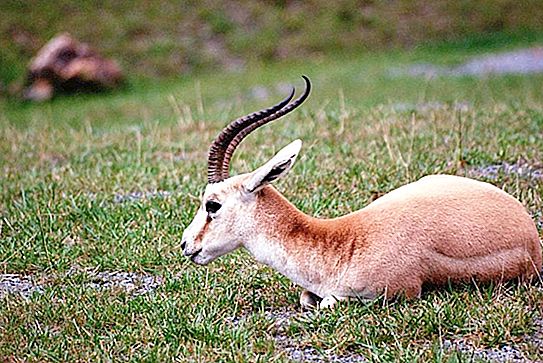
Studying these animals is an incredibly difficult task. After all, they are shy and very careful. In 2014, special photo traps began to be used in the reserve, which were placed near fresh water sources. The result was not long in coming: the staff of the Ustyurt Reserve received a number of magnificent pictures of gazelles and some other ungulates.
Honey badger
Honey badger is an animal from the marten family, outwardly similar to a badger. The main habitat is in Africa. Contrary to its name, the honey badger feeds mainly on rodents, amphibians, and bird eggs. It is an aggressive and agile predator with very sharp claws and teeth. Sometimes it can even attack a fox or an antelope. It is extremely rare within the Ustyurt Reserve.
Caracal
Caracal is a predatory feline mammal. Another common name is steppe lynx. It differs in a plain sandy or brownish color, as well as the presence of black tassels on the ears. Caracal preys mainly on jerboas, ground squirrels and other rodents. The population of the species within the reserve is not numerous.
Manul
Another extremely rare inhabitant of the Ustyurt reserve is the wild cat Pallas. In size, it is similar to a domestic cat, but differs from the latter in more dense coat and shortened paws. Unfortunately, over the past thirty years, the fact of the presence of manul in the reserve has not been recorded. But experts do not lose hope to meet this cute and funny predator.

